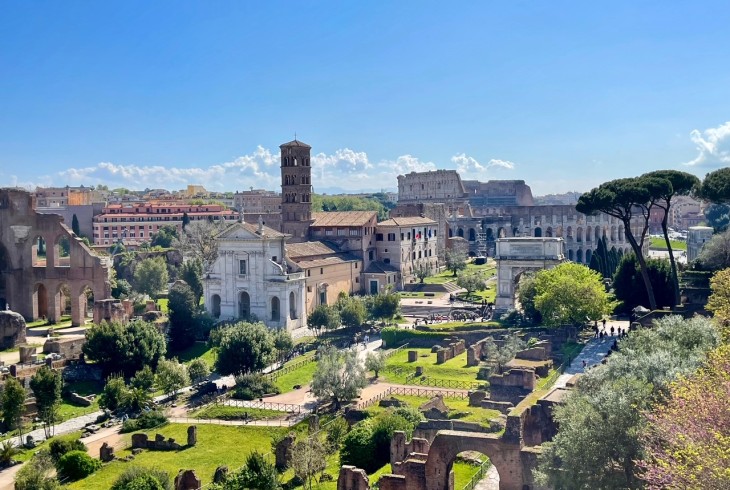Once the beating heart of the mighty Roman empire, the sprawling Roman Forum was the grand stage where some of antiquity’s most significant dramas unfolded: the rise and fall of the Republic, the proclamations of emperors, fiery political debates and the triumphal marches of conquering legions all took place here.
What now appears a maze of crumbling columns and pathways of battered stone was once a gleaming world of soaring temples, bustling marketplaces and imposing courthouses. To walk through the Forum is to retrace the steps of Julius Caesar, Cicero, and Augustus - men who shaped the fate of Rome, and by extension, the world.
We’ve been offering guided visits to the Roman Forum led by our team of archaeologists and historians for decades, so we know a thing or two about these few acres of prime ancient real estate! In this guide we’ve gathered together everything you need to know to make the most of your visit - including essential information on tickets and opening hours, must-see highlights, whether you should take a tour, and how long you need to spend here.
Read on to find out why a no visit to Rome is complete without a journey through these evocative ruins!
Why Should You Visit the Roman Forum?
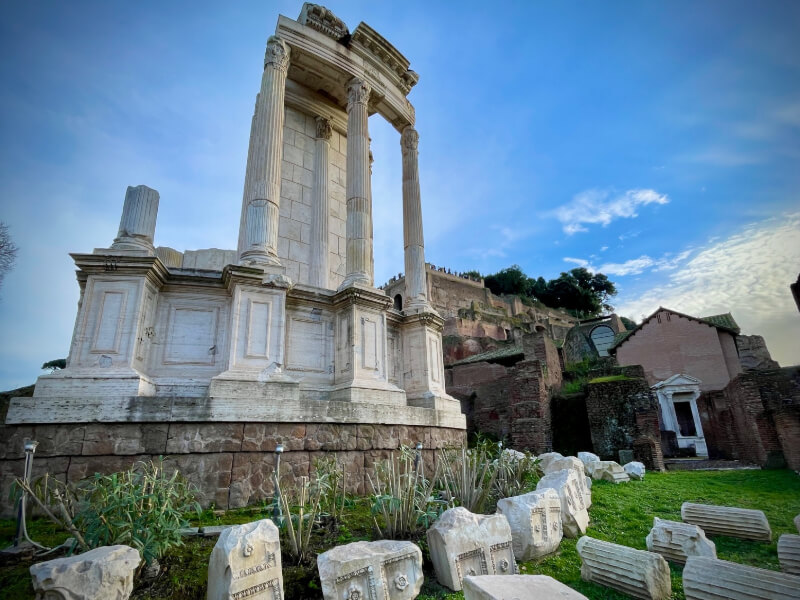
Many visitors to the Eternal City tick the Colosseum off their bucket list and leave it at that. But to truly understand ancient Rome, you really need to step beyond the iconic amphitheater and into the Roman Forum across the road. While the Colosseum tells the story of Rome’s love for spectacle and entertainment, the Forum reveals the city’s very soul - its politics, religion, and daily life. This is where the powerful Senate met, where the priestesses of Vesta tended Rome’s sacred eternal flame, where emperors processed in triumph, and where ordinary citizens gathered to conduct business and legal affairs.
Need more convincing? The Forum was the site of some of the most momentous events in Roman history, and a visit here will immerse you in these fascinating tales. In 44 BC, Julius Caesar’s body was cremated in the Forum after his assassination, leading to mass riots and the eventual rise of the Roman Empire. A year later, the decapitated head of the great politician and orator Cicero was displayed as a macabre warning high up on the Forum’s Rostrum after his brutal murder by Mark Antony, signalling that the ideals of the Roman Republic were well and truly dead.
Beyond its historical importance, the Roman Forum is breathtakingly beautiful. The ruins, framed by cypress trees and bathed in golden light, create an unforgettable scene, especially at sunrise or sunset. Whether you’re a history enthusiast or simply someone who appreciates the power of ancient places, the Forum is an unmissable stop in Rome.
A Brief History of the Roman Forum
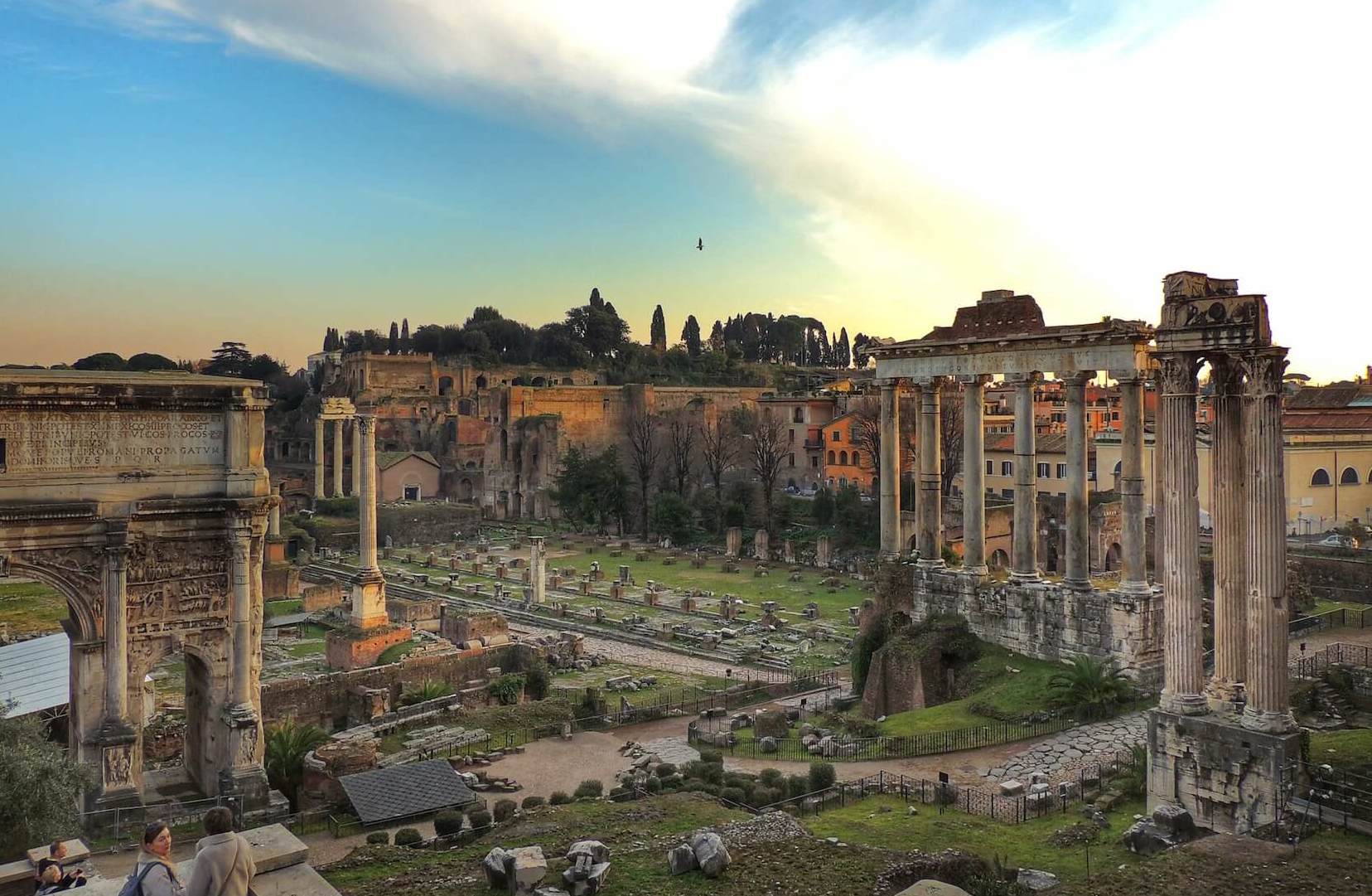
The history of the Roman Forum stretches back more than 2,500 years, evolving from a humble marketplace into the beating heart of empire.
In Rome’s earliest days, the area of the Forum was a marshy valley between the Capitoline and Palatine Hills. Around the 7th century BC, under the reign of the early Roman kings, the land was drained using the Cloaca Maxima, one of the world’s earliest sewage systems. The newly dry land became a gathering place for trade, political discussions, and religious ceremonies, marking the beginnings of what would become Rome’s most important civic space.
As Rome grew from a monarchy into a republic, the Forum became the city’s political and judicial center. Temples and government buildings were erected, and the space was used for public speeches (on the Rostra), criminal trials (in the Basilica Julia) and senate proceedings (in the Curia Julia).
Under the emperors, the Forum was expanded and monumentalized. Augustus, the first emperor, built new structures like the Temple of Caesar, dedicated to his adoptive father. Later emperors, including Vespasian and Domitian, commissioned grand additions, such as the Temple of Peace and new basilicas. The Forum continued to be the symbolic center of Rome, where triumphal processions passed through its streets, commemorating military victories with new arches and statues.
What Happened to the Forum after the Fall of the Roman Empire?
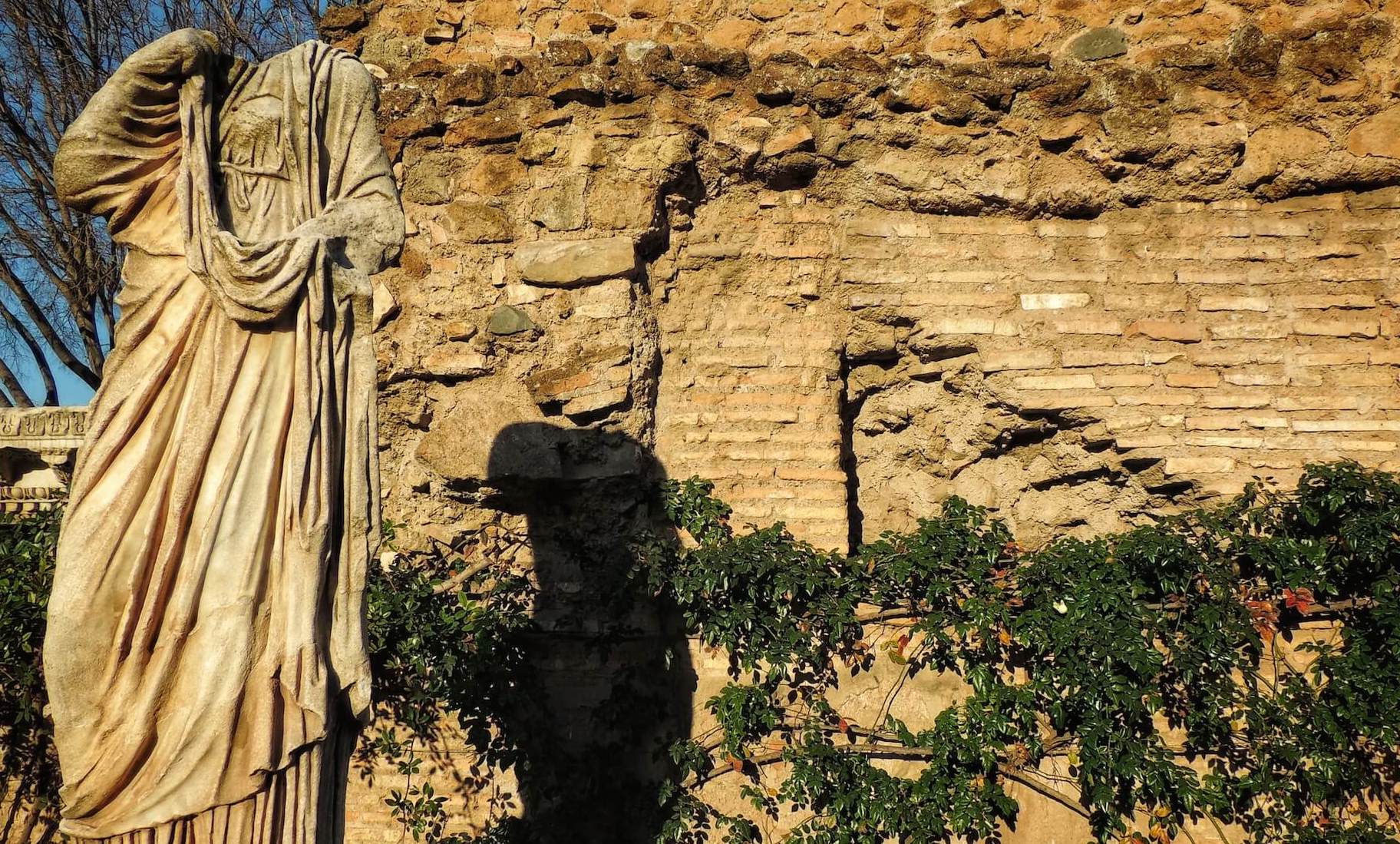
In the later years of the Empire, the Forum began to decline. Rome’s political center had shifted to the larger, more elaborate Imperial Fora built by Julius Caesar, Augustus, and Trajan nearby. As the empire crumbled, many of the Forum’s temples and buildings fell into disuse or were repurposed.
During the Middle Ages, the once-grand Forum was largely abandoned and became known as the Campo Vaccino (Field of Cows), where cattle grazed among the ruins. It wasn’t until the Renaissance that scholars and artists rekindled interest in Rome’s ancient past, leading to the first excavations.
Serious archaeological work began in the 19th and 20th centuries, gradually revealing the Forum’s buried splendor. Excavations remain ongoing, and today, the Forum stands as one of the most significant historical sites in the world, offering an unparalleled window into the rise and fall of ancient Rome.
Is It Worth Taking a Tour of the Roman Forum?
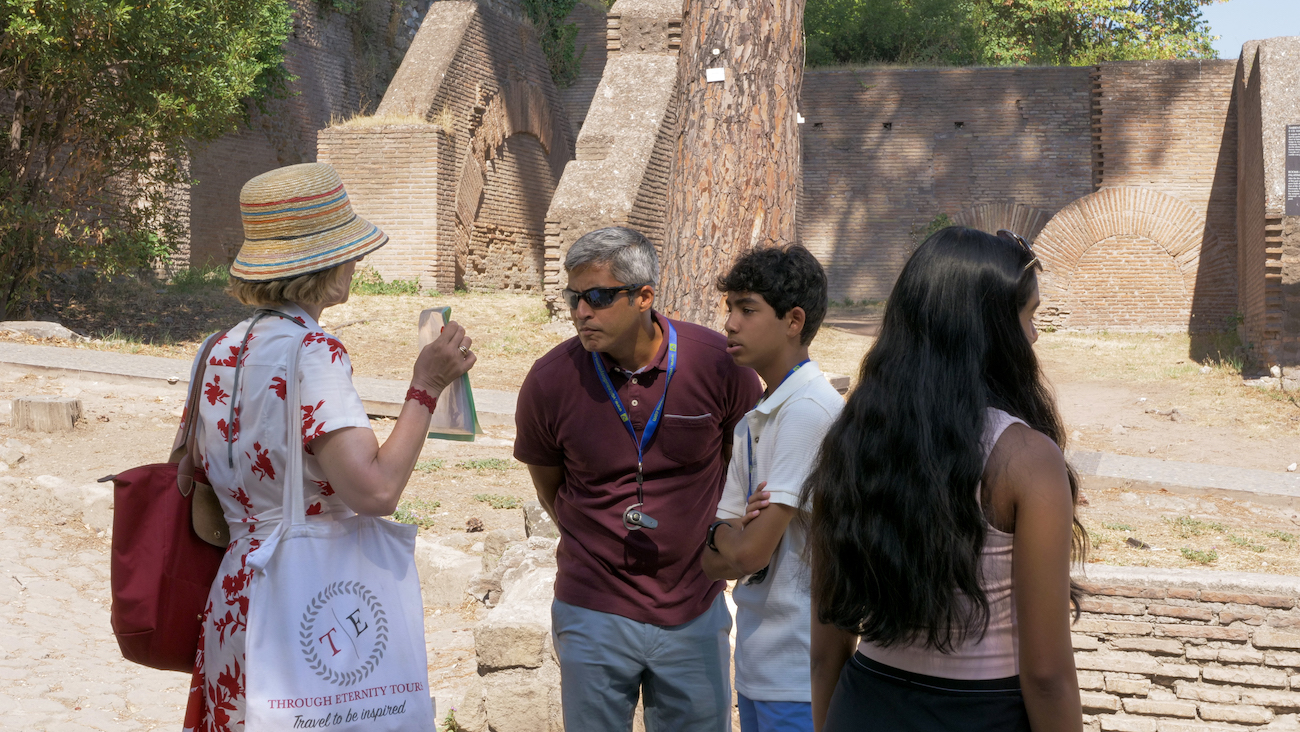
Absolutely. While exploring on your own is rewarding, a guided tour transforms the experience, helping you truly understand what you're looking at. The Roman Forum is a vast, complex site where many structures have crumbled into fragments, and without expert guidance, it's easy to miss key details or struggle to piece together the bigger picture.
A knowledgeable guide—especially an archaeologist or historian—can decode the ruins, reconstructing the lost grandeur of temples, basilicas, and monuments. They can explain how a seemingly unremarkable foundation was once a towering structure, or why a pile of broken columns might have been the setting for some of Rome’s most pivotal moments. Their storytelling can transport you back to the Forum’s heyday, when senators debated, merchants bargained, and emperors paraded in triumph.
To find out the best tours to take of the Colosseum and Ancient City including the Roman Forum, check out our guide here: Choosing the Right Ancient City Tour for You.
What Are the Opening Hours of the Roman Forum?
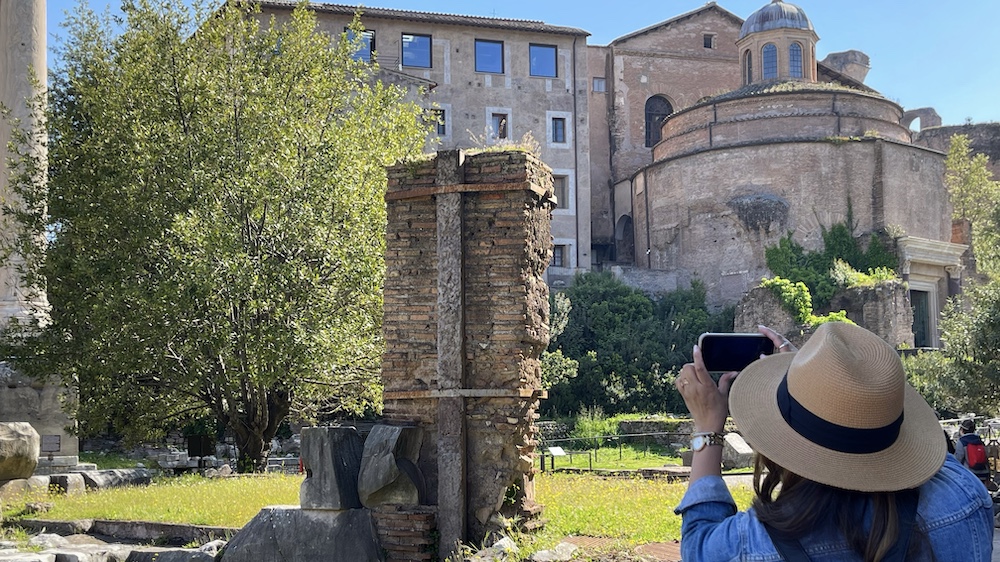
The Roman Forum is open daily, with hours varying by season:
- March 30 – September 30: 9:00 AM – 7:15 PM (last entry at 6:15 PM)
- October 1 – October 25: 9:00 AM – 6:30 PM (last entry at 5:30 PM)
- October 26 – December 31: 9:00 AM – 4:30 PM (last entry at 3:30 PM)
Check official sources before your visit, as hours may change due to special events or maintenance. The site is closed on December 25 and January 1.
What to See at the Roman Forum
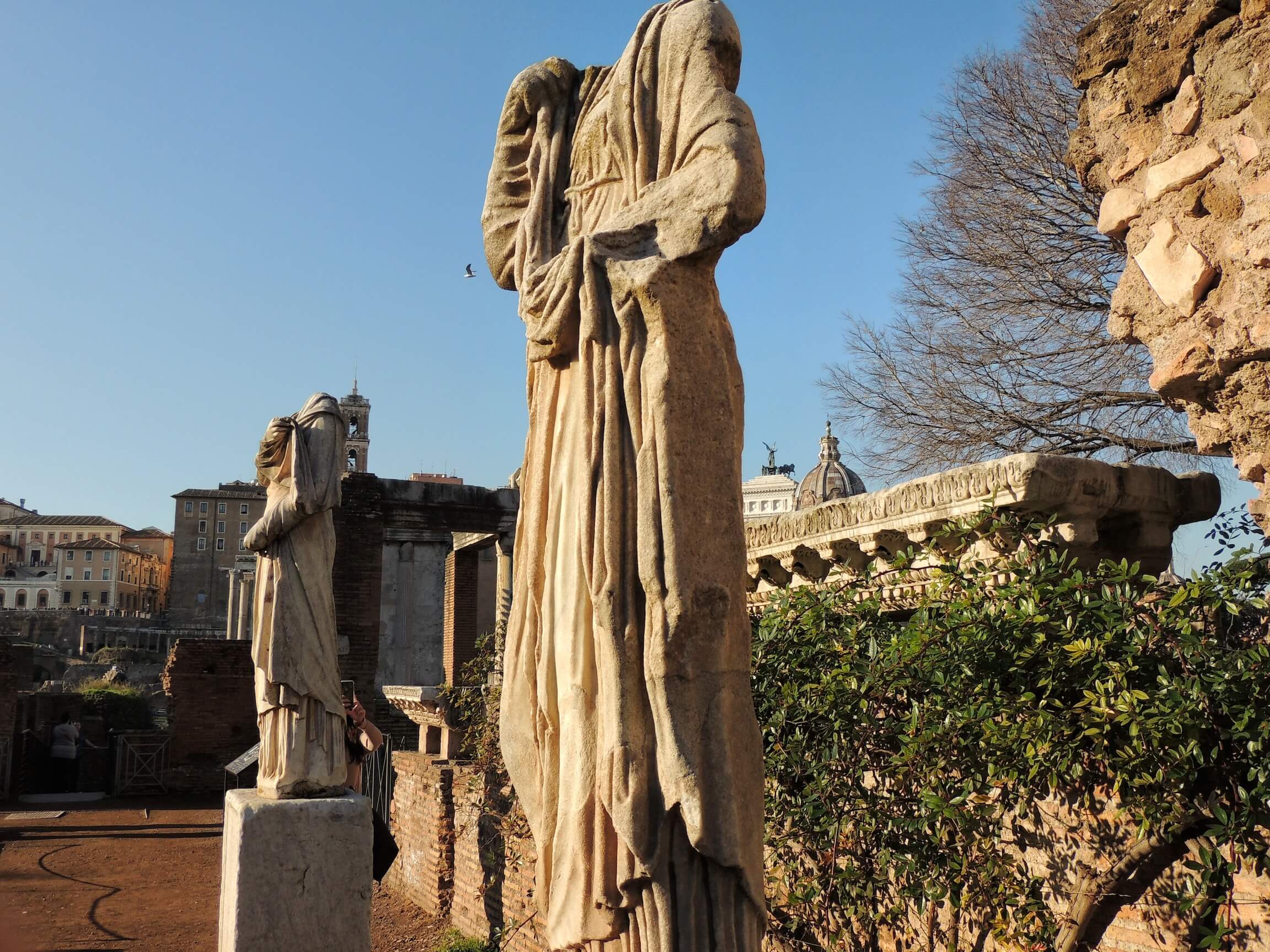
There are a lot of things to look out for in this vast archaeological park. Elsewhere we have put together a detailed guide to what you need to see in the Roman Forum. For those of you short on time, here are five landmarks that you simply can’t afford to miss when exploring the Forum:
- The Temple of Saturn – The iconic eight-columned ruin that once housed Rome’s state treasury and was central to the raucous Saturnalia festival.
- The Arch of Titus – A triumphal arch celebrating Rome’s victory over Judea, featuring stunning reliefs of the spoils taken from Jerusalem.
- The Curia Julia – The excellently preserved Senate House, where Rome’s elite politicians met to discuss the affairs of state.
- The Via Sacra – The Forum’s main thoroughfare, once lined with grand temples and the site of Rome’s legendary triumphal parades.
- The House of the Vestal Virgins – The secluded residence of Rome’s sacred priestesses, featuring statues of the esteemed women who kept the city’s eternal flame alive.
What Are the Ticket Options for the Roman Forum?
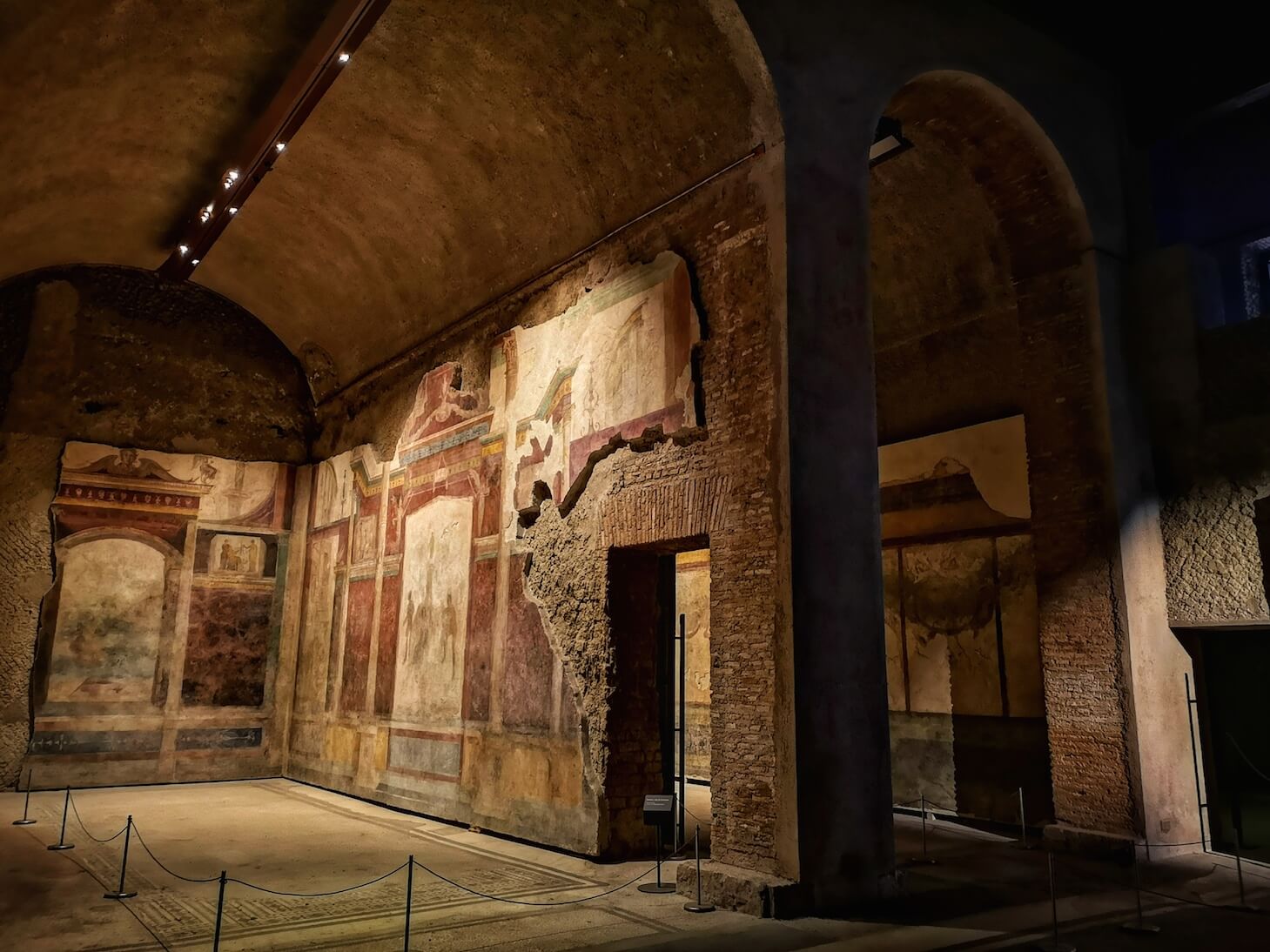
Most tickets to the Roman Forum also include access to the Colosseum and Palatine Hill, with several options available depending on what you’d like to see:
- 24-Hour Ticket (€18.00) – Standard entry to the Colosseum (at a reserved time), Roman Forum, and Palatine Hill, plus access to any ongoing exhibitions.
- Full Experience Ticket with Arena Access (€24.00) – Includes everything in the standard ticket plus access to the Colosseum’s Arena floor and the SUPER sites (special locations within the Forum and Palatine Hill).
- Full Experience Ticket with Underground Access (€24.00) – Includes the Colosseum’s underground levels in addition to the Arena, Forum, and Palatine Hill.
- Forum Pass SUPER (€16.00) – Grants access to the Roman Forum, Palatine Hill, and Imperial Fora (but not the Colosseum). This ticket is valid for 30 days from the date of purchase and includes access to SUPER sites.
For more on the Roman Forum Super Sites, check out our guide to these special extras here: How to Visit the Roman Forum Super Sites.
Who is entitled to free or discounted entry?
- EU Citizens (18-25): €2 for standard tickets.
- Children under 18: Free admission.
- Free Entry Days: The first Sunday of every month, April 25, June 2, and November 4.
Should You Buy Tickets in Advance?
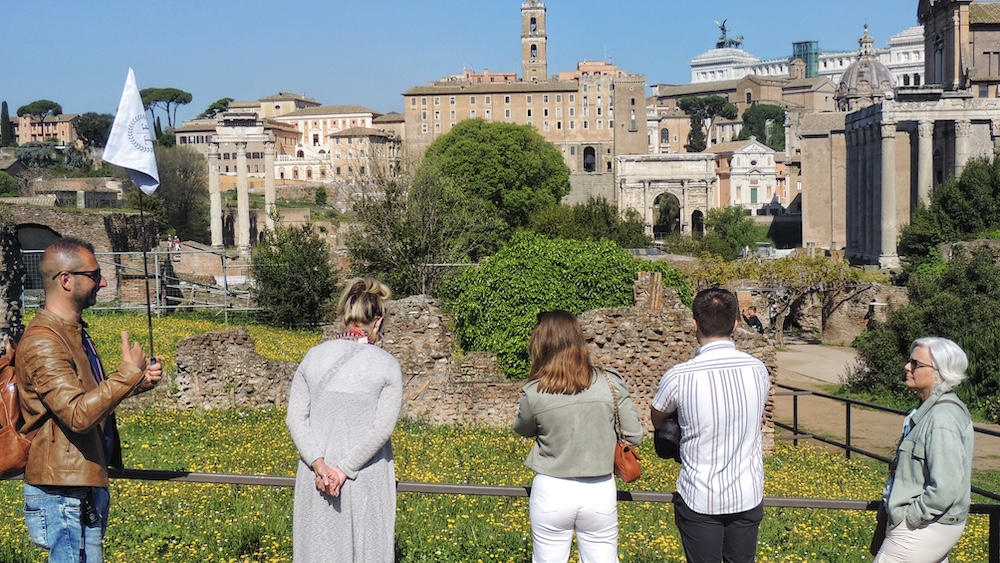
Yes - advance booking is highly recommended! The Roman Forum is amongst Rome’s busiest attractions, and tickets frequently sell out - esèpecially if you are combining your visit with the Colosseum. Although there are ticket offices on site, this should be a last resort - buying online ahead of time guarantees your entry and helps you skip long ticket queues.
For a detailed guide on buying your tickets to the Colosseum and Ancient City, see our dedicated guide here: How to Visit the Colosseum in 2025.
How Long Should I Spend at the Roman Forum?
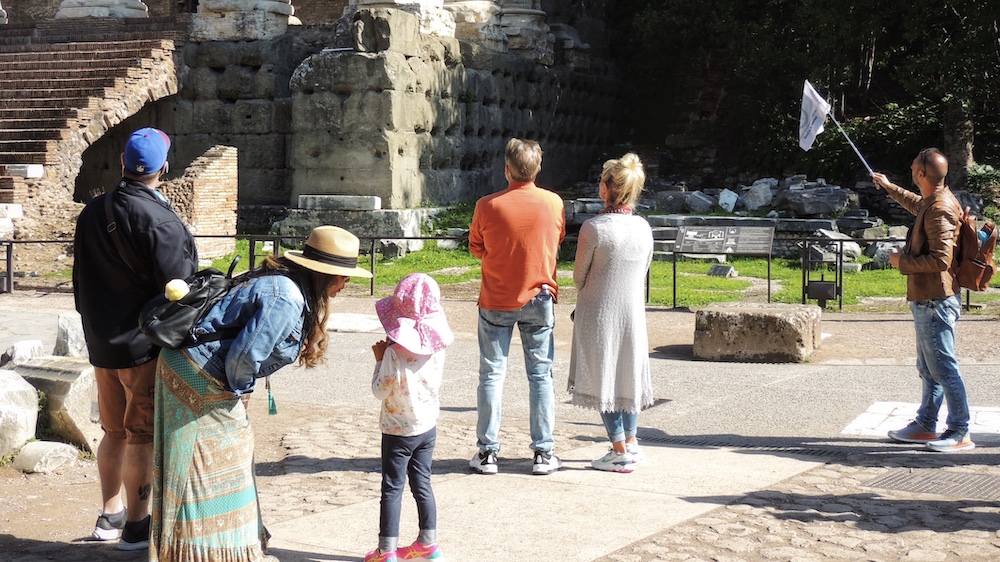
A thorough visit takes around 1.5 to 2 hours. If you’re combining it with the Palatine Hill and Colosseum, plan for 3-4 hours to take in all the highlights. You will have a much better experience here if you don’t need to rush!
Can I Visit the Forum and Colosseum on the Same Day?
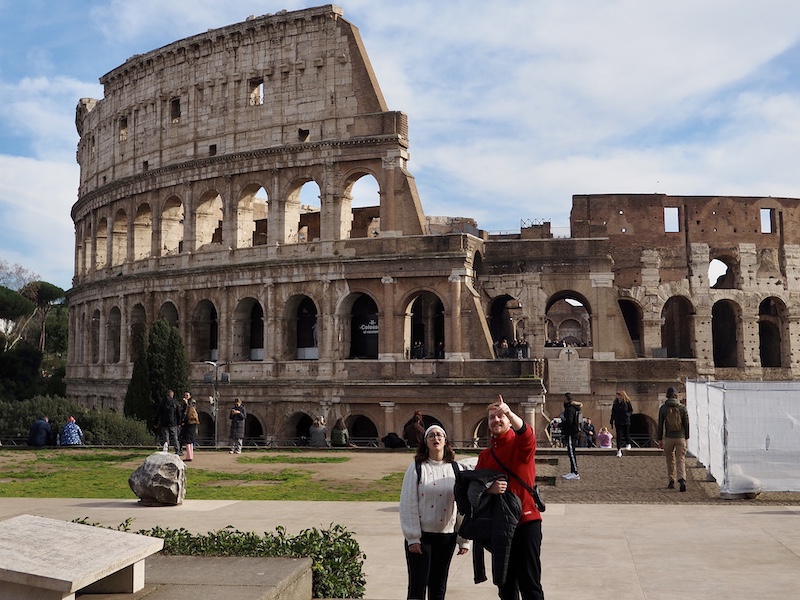
Yes! Since tickets cover both sites, most visitors explore them together. It’s best to start early to make the most of your day. Most guided tour options will visit the Colosseum and Roman Forum one after the other. If you prefer you can also spread your visit to the three major sites of the ancient city over two days, but remember you will need to visit the Colosseum at your timed slot.
Is It Worth Visiting the Palatine Hill?
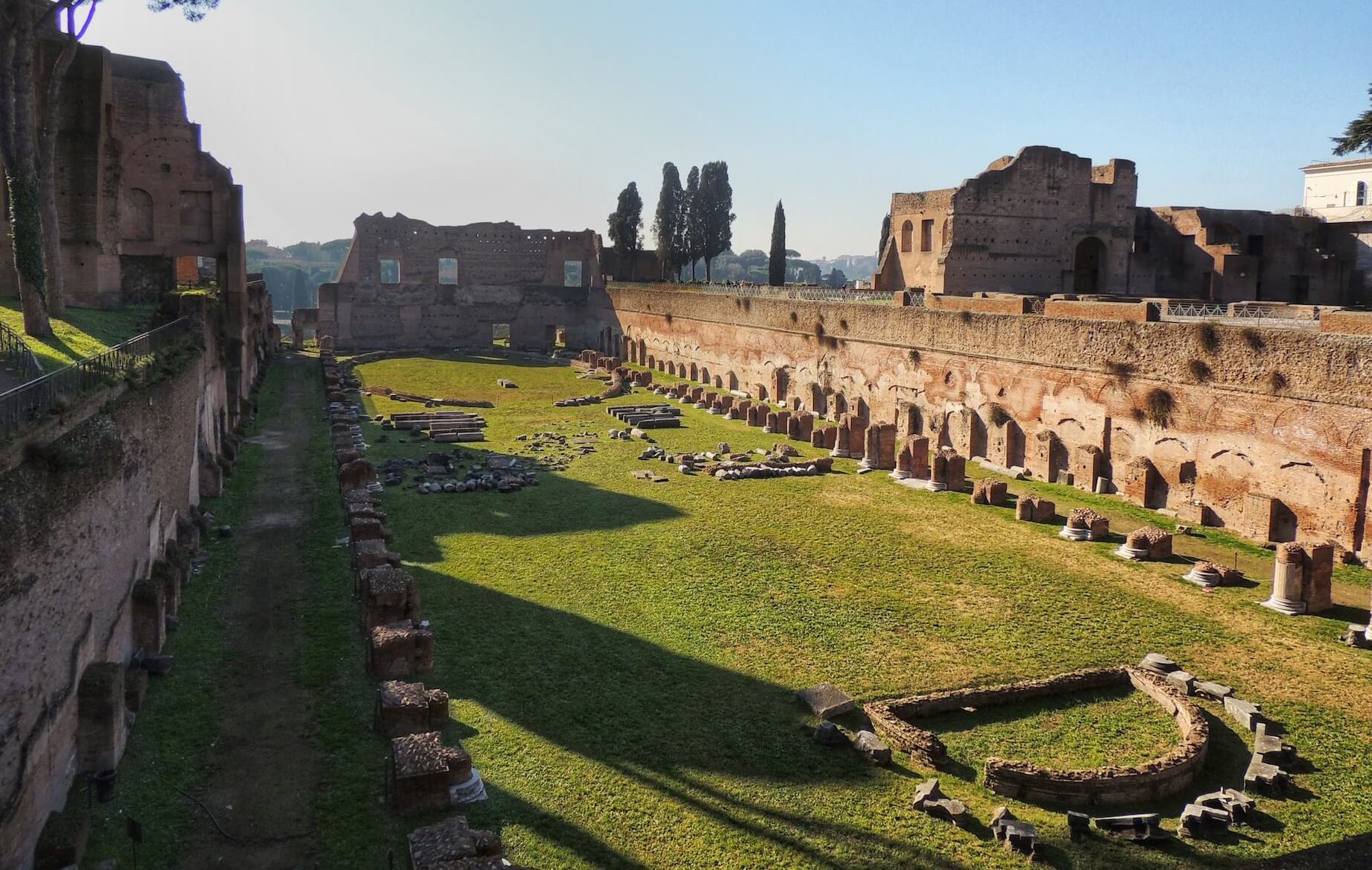
Definitely. Overlooking the Forum, the Palatine Hill is where Rome’s legendary founders, Romulus and Remus, were said to be raised by a she-wolf. Later, it became home to emperors, boasting grand palaces and stunning views over the city. It’s quieter than the Forum, making it a great place to soak in Rome’s ancient splendor. Too many visitors to Rome ignore the Palatine, and they are missing out.
To find out more about the splendors that await on the Palatine Hill, see our detailed guide here: The Complete Online Guide to the Palatine Hill.
How Do I Get to the Roman Forum?
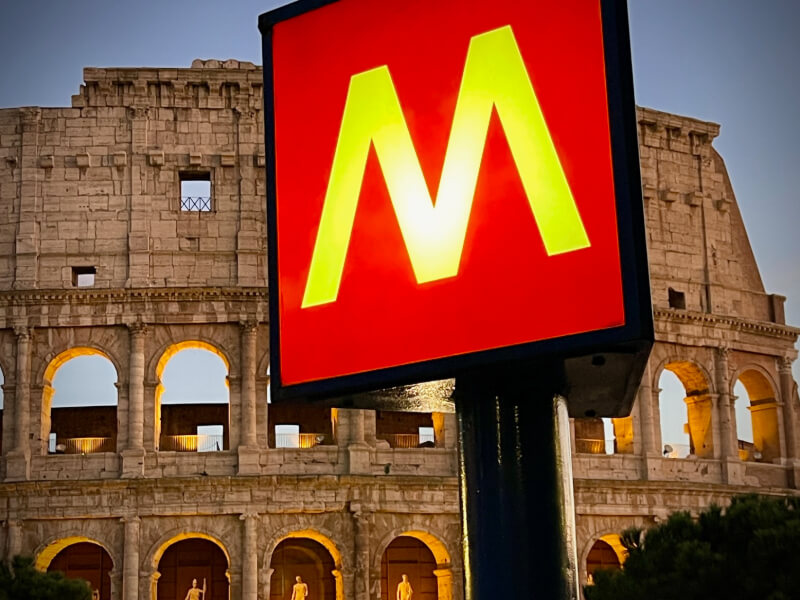
The Forum is centrally located and easily accessible:
- Metro: Take Line B to Colosseo station (5-minute walk).
- Bus: Several routes stop nearby, including 51, 75, 85, and 87.
- Tram: Line 3 stops at Piazza del Colosseo.
- Walking: If you’re in central Rome, the Forum is a scenic stroll from Piazza Venezia or the Pantheon.

We hope you found our guide to the Roman Forum helpful! With so much history packed into its ruins, it can be challenging to fully grasp the significance of what you're seeing when visiting on your own. Through Eternity offer small group and private tours of the Forum, led by expert archaeologists and historians, to help you uncover its hidden stories and navigate its most important sites with ease. In our opinion, it’s the best way to experience the heart of ancient Rome. To learn more about our Roman Forum tours, click here!
MORE GREAT CONTENT FROM THE BLOG:
- How to Visit the Colosseum in 2025
- Gladiators in the Colosseum: An Introduction
- Did the Colosseum Have a Roof?
- 5 Fascinating Facts About the Colosseum's Arena Floor
- The Colosseum Underground: The Deadliest Show on Earth
- The Best New Tours of Italy in 2025
- Where to Stay in Rome in 2025: Areas and Hotels Guide
